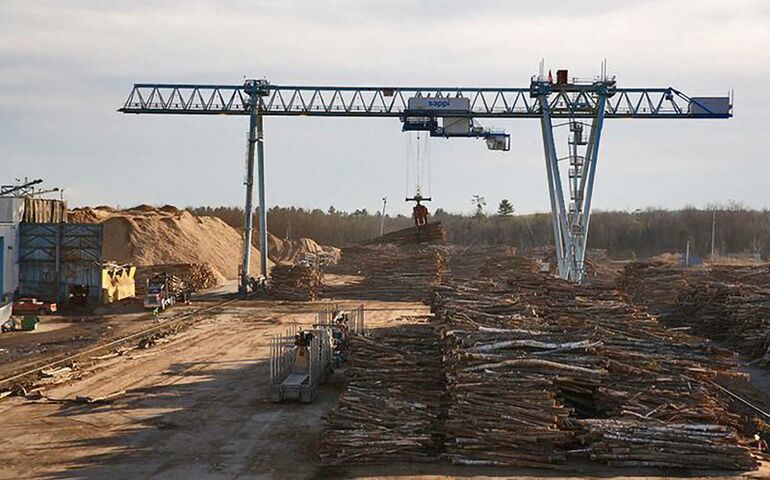Maine’s forest product industry aims for 30% growth over five years
 COURTESY / SAPPI NORTH AMERICA
Forest Opportunity Roadmap/Maine seeks to find new applications and markets for Maine’s forest product industry. Seen here is the wood yard at Sappi's Somerset Mill in Skowhegan, shown before its $25 million upgrade.
COURTESY / SAPPI NORTH AMERICA
Forest Opportunity Roadmap/Maine seeks to find new applications and markets for Maine’s forest product industry. Seen here is the wood yard at Sappi's Somerset Mill in Skowhegan, shown before its $25 million upgrade.
A business coalition for Maine’s forest-products industry is looking to add 30% growth to the $8 billion industry by 2025.
The coalition, the Forest Opportunity Roadmap/Maine, is rolling into the second phase of its work, implementing specific tactics identified in a previous data-gathering stage.
“We’re looking at some of these technologies and we’re actually entertaining CEOs of companies who are coming to Maine and saying, ‘Where might your ideas fit our forest economy and add to diversify and strengthen in existing operations and/or new operations?'” Steve Schley, chair of the FOR/Maine executive committee, said in a news release.
In September 2018, FOR/Maine outlined strategies for increasing the industry’s annual economic impact in Maine. They included attracting new investment, national and international marketing and promotion and development of new, eco-friendly plastics and chemical products made of residual materials from traditional wood-manufacturing processes.
In the past, Maine’s forest resource went primarily to papermaking and saw logs. Those products will remain the backbone, but the industry is looking to diversify.
The plan tackles diversification along a variety of tracks, including the following.
• Market Attraction: In Phase I, a global market analysis focused on identifying opportunities for expansion of Maine’s forest economy based on an understanding of wood availability, global market dynamics and the existing industry operators in Maine.
In Phase II, the work has shifted toward market attraction. A committee has made a request for proposals for a consultant who will guide an assessment of the business attraction environment, recommend and develop marketing materials, and provide FOR/Maine with the information and connections necessary to generate and develop leads, resulting in the attraction of companies to Maine that will use the industry’s abundant softwood pulp and residuals.
• Wood Supply: In Phase I, a committee found that Maine’s abundance of spruce, fir and wood residuals provide opportunities for growth, and that a significant amount of the wood resource is located on parcels controlled by small landowners.
In Phase II, work will continue to explore scenarios for growth in the industry, and to educate small landowners about a variety of options for land management.
• Emerging Technology: Work is underway to identify and amplify emerging technologies that are a potential win for Maine. Monthly stakeholder inquiries track new developments and partnerships between Maine & Co., the Maine International Trade Center, the University of Maine, the Department of Economic and Community Development and Biobased Maine.
• Workforce: Additional efforts focus on mainstreaming the forest economy in existing workforce efforts, understanding the demand for workers, and developing outreach and recruitment strategies informed by career pathways.
Mainebiz web partners
Advocates for lumber stands and land Owners will require foresters with proposals equitable for all parties since demand for Chip hardwood will require licensed logger's with previous track records of safety and responsible practices as well as equipment to efficiently harvest and transport on primary and private roadways. This excessive weight will degrad roadway surfaces if not inspected and noted beforehand.










1 Comments